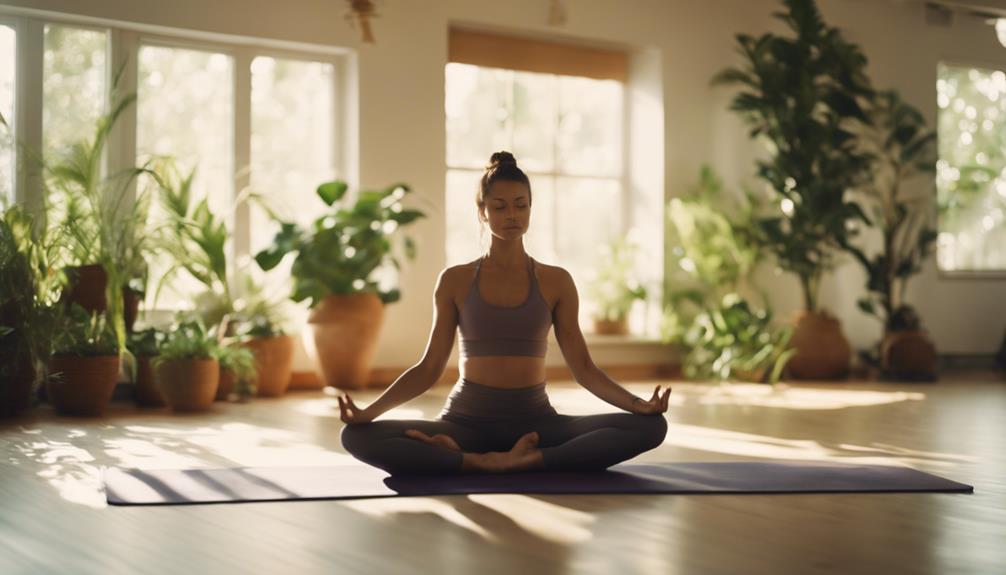What Shoes For Yoga

“`markdown
What Shoes for Yoga: The Ultimate Guide to Choosing the Right Footwear
Yoga is a practice that emphasizes mind-body connection, flexibility, and strength. While many practitioners prefer to practice barefoot, there are times when wearing shoes may be necessary or preferred. In this comprehensive guide, we will explore what shoes for yoga are best suited to enhance your practice, whether you’re a beginner or an experienced yogi. We’ll cover various types of yoga, the features to look for in yoga shoes, and top recommendations to help you choose the right footwear.
Understanding Different Yoga Styles and Their Footwear Needs
Before diving into what shoes for yoga you should consider, it’s essential to recognize that different styles of yoga may have varying footwear needs. For instance, Vinyasa and Power Yoga are more dynamic, often requiring shoes that offer grip and support due to the intensity of the movements. Conversely, restorative styles like Yin Yoga often allow for a more relaxed approach, where barefoot practice is more common. Knowing your yoga style can guide you in selecting footwear that complements your practice and enhances your stability and comfort.
Key Features to Look for in Yoga Shoes
When choosing what shoes for yoga are appropriate, there are several key features to keep in mind. First, look for shoes with a good grip. A non-slip sole is crucial to prevent slipping during poses. Second, consider flexibility; shoes should allow for natural foot movement. Breathability is also important; shoes made from lightweight, breathable materials can help keep your feet cool during practice. Additionally, lightweight construction and cushioning will enhance comfort. Finally, a snug fit without being too tight will promote stability and support during your practice.
Related Posts:
Benefits of Wearing Shoes for Yoga
While many yogis prefer to practice barefoot, there are several benefits to wearing shoes during yoga. Shoes can provide additional support and protection for your feet, especially if you are practicing in a studio with hard surfaces. They can also prevent foot injuries and reduce the risk of slipping, which is especially important during more vigorous styles of yoga. Moreover, shoes can provide arch support for those with flat feet or other foot issues, allowing for a more comfortable practice. Understanding these benefits can help you make an informed decision about what shoes for yoga are right for you.
Best Shoe Types for Different Yoga Practices
When considering what shoes for yoga are best, it’s important to recognize that not all shoes are created equal. For hot yoga classes, look for moisture-wicking and breathable shoes that can handle sweat. For outdoor yoga sessions, consider trail running shoes that offer adequate grip and support. If you’re engaging in restorative yoga, consider slip-on shoes or even specialized yoga socks that provide grip without constricting your feet. By understanding the different types of shoes available, you can choose the perfect pair that aligns with your practice.
Top Recommendations for Yoga Shoes
Here are some top recommendations for what shoes for yoga you might consider. The Vionic Women’s Tide II Toe Post Sandal is an excellent choice for those looking for comfort and arch support. For a more versatile option, the Nike Free RN Flyknit provides flexibility and breathability, making it suitable for various yoga styles. If you’re on a budget, the Adidas Adizero Tempo is affordable while still offering the necessary grip and support. Lastly, the Asics Gel-Fit Nova is perfect for more intense sessions, providing excellent cushioning and stability. These options will help you find the best shoes for your yoga practice.
How to Care for Your Yoga Shoes
Proper care for your yoga shoes can prolong their lifespan and maintain their performance. After each use, it’s a good idea to wipe down the exterior to remove sweat and dirt. If your shoes are machine washable, follow the manufacturer’s instructions for cleaning. Allow them to air dry naturally; avoid exposing them to direct sunlight or heat sources, which can damage materials. Additionally, store your shoes in a cool, dry place to prevent odors and deterioration. Taking these steps will help ensure that your shoes remain in great condition for your yoga sessions.
Transitioning to Yoga Without Shoes
If you’re used to practicing with shoes, transitioning to a barefoot practice might feel daunting. However, there are benefits to practicing without shoes, such as improved balance and foot strength. Start by practicing in a controlled environment, like your home, to become comfortable with the sensation of being barefoot. Gradually integrate barefoot practice into your routine, paying attention to how your body feels. As you build confidence, you might find that practicing without shoes enhances your connection to the mat and improves your overall yoga experience.
Conclusion: Finding Your Perfect Yoga Shoes
Choosing the right footwear is essential for enhancing your yoga practice. Understanding what shoes for yoga are suitable for your specific needs can help you improve your stability, comfort, and overall experience on the mat. Whether you opt for a specialized yoga shoe or decide to practice barefoot, the key is to select what feels best for your body and practice style. With the right information and options at your disposal, you can confidently choose footwear that supports your journey in yoga, allowing you to focus on your breath and movement.
“`
This blog post is structured to be SEO-friendly by incorporating the keyword phrase “what shoes for yoga” in various headings and throughout the text, while also providing valuable information to readers. Each section is designed to engage the audience and optimize for search engines, ensuring it meets best practices for readability and relevance.How Does Yoga Help You Lose Weight